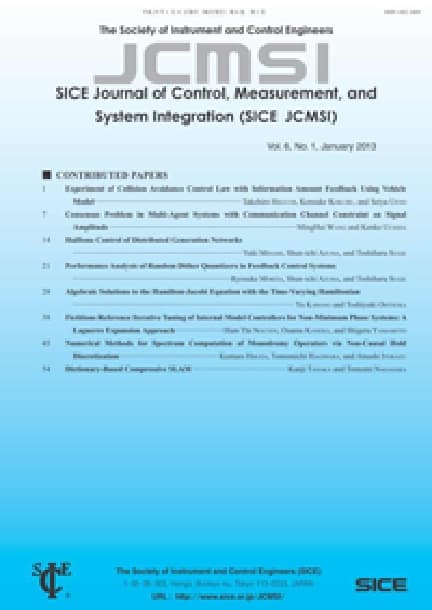Experiment of Collision Avoidance Control Law with Information Amount Feedback Using Vehicle Model
Takehiro HIGUCHI, Kensuke KOKUBU, Seiya UENO
pp. 1-6
DOI:
10.9746/jcmsi.6.1Abstract
This paper is on the experiment of the collision avoidance control law with information amount feedback using a vehicle model. The collision avoidance is a key technology for future mass transportation systems. The amount of information obtained by the evader is treated as a physical value for the collision avoidance feedback control. This will lower the risk of collision when information of the environment cannot be obtained due to various reasons and when the intruder is coming in from out-of-sight. This paper demonstrates the effect of collision avoidance control with information amount feedback using a vehicle model. The results show that the control law has the ability to lower the risk of the collision and works in the actual environment for collision avoidance with similar motion with that of humans.









